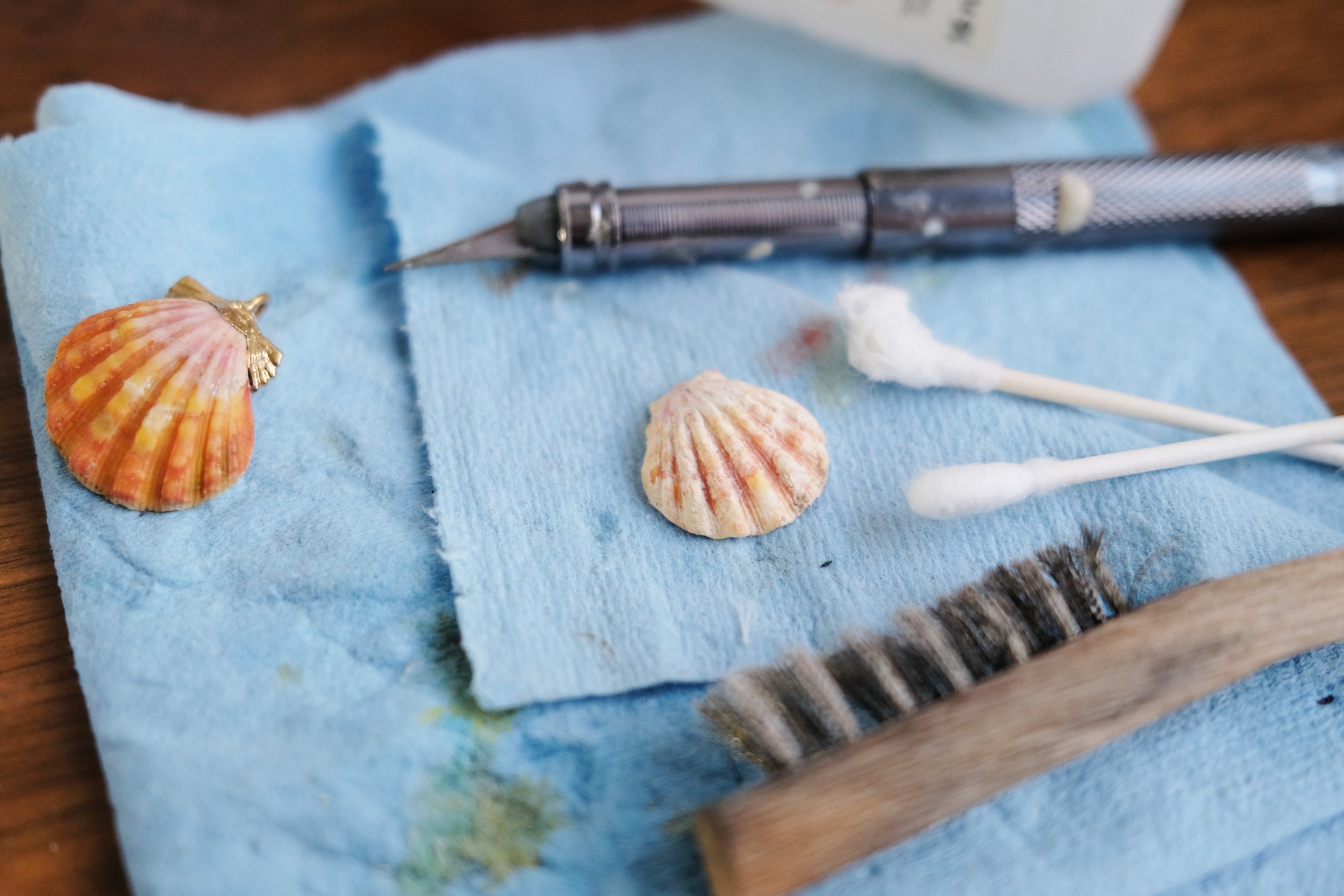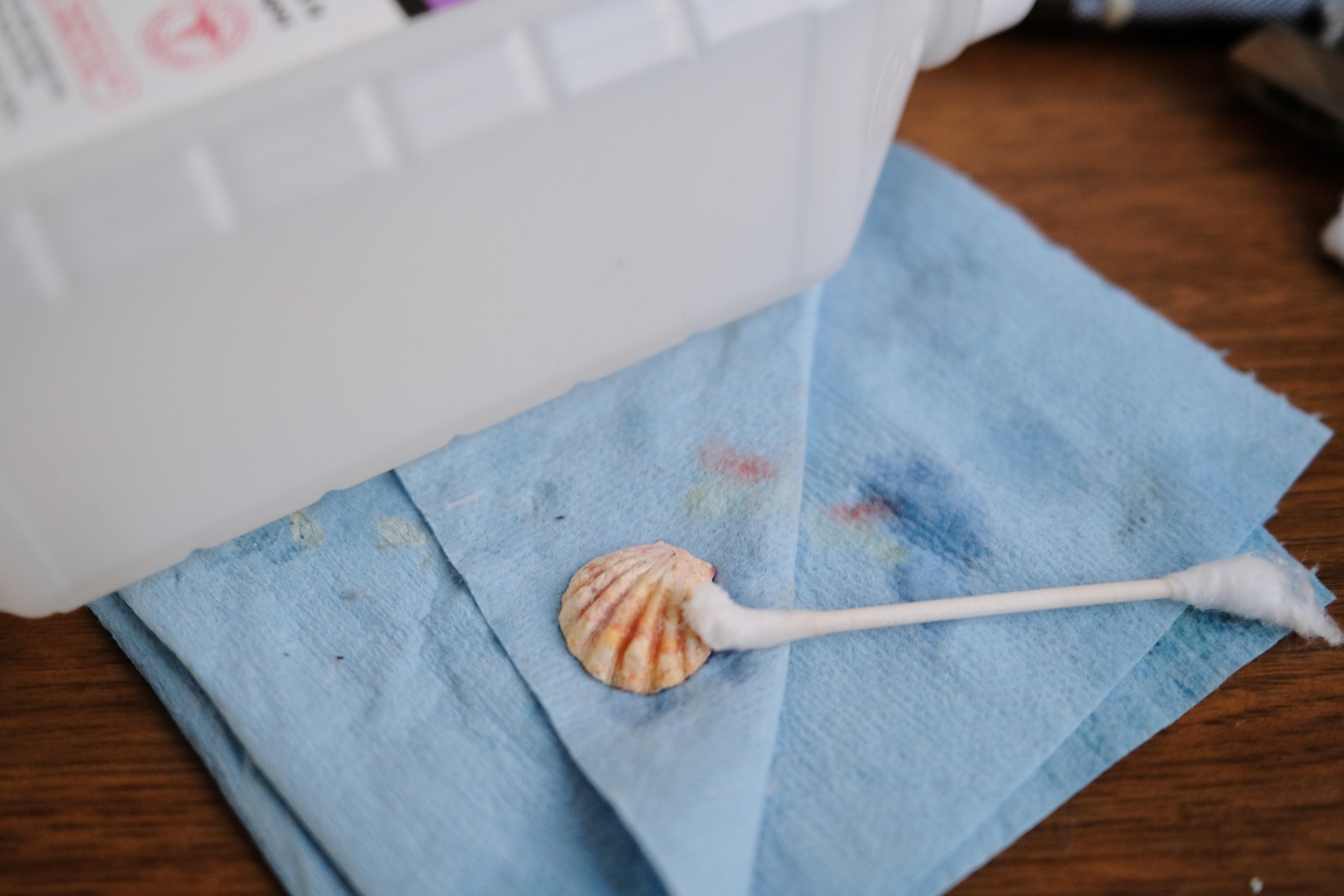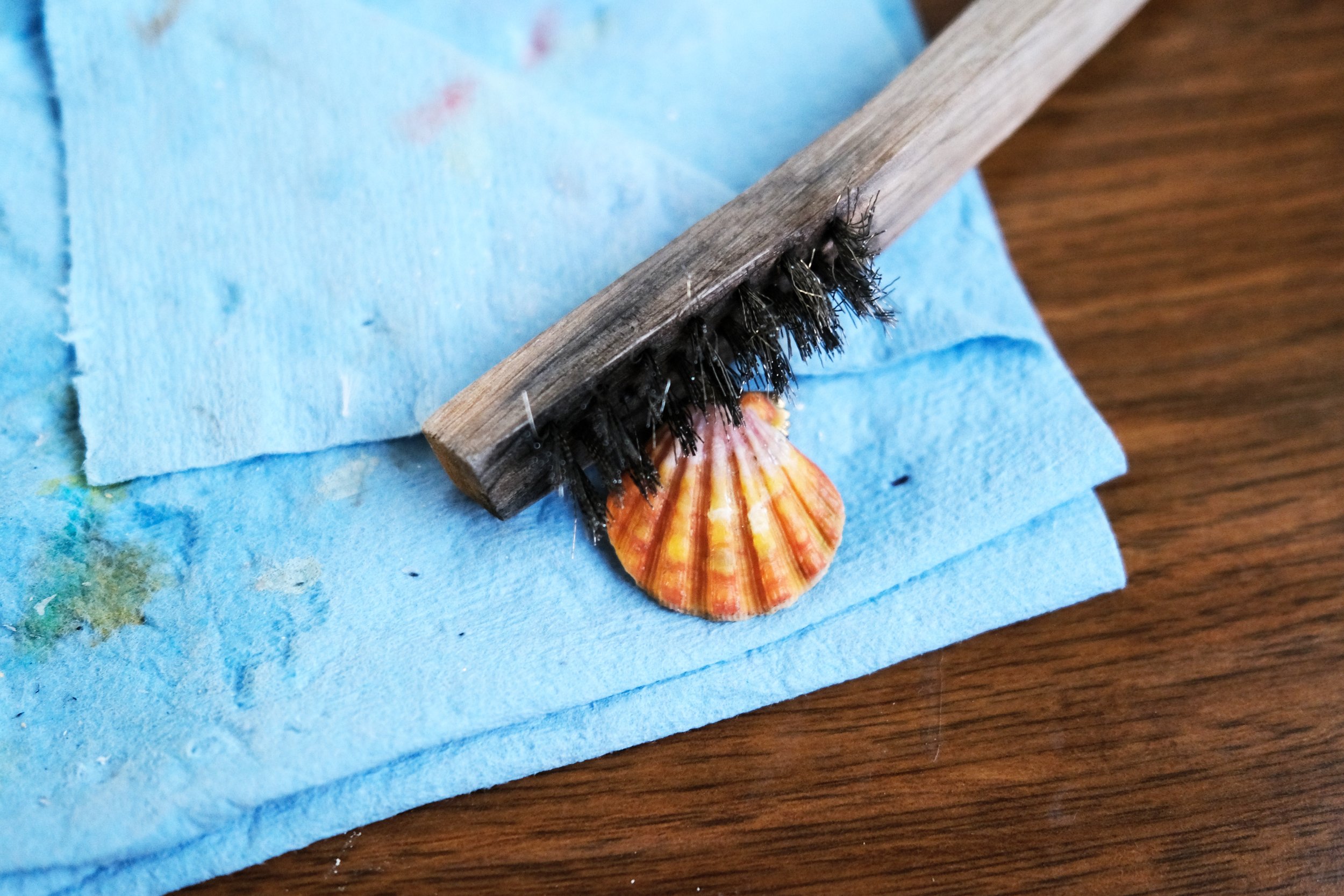Why don’t you just use Muriatic Acid?
Sure— Muriatic Acid is a powerful and amazing shortcut to cleaning shells. In a few seconds, you can literally dissolve buildup that has been on a shell for decades. If you’re careful and have the right protective equipment— go for it! If you’re at all clumsy like I am, please stay away!
The first time I had used Muriatic Acid was not to clean shells, but to soak an anchor that was sitting at the bottom of a boat harbor for five years. Within moments, every barnacle or foul and smelly alien growth melted off the anchor chain. I was stunned, but also horrified. If this is what it does to stuff that had been growing on an anchor for years, imagine what happens if you accidentally spill it on a surface (or yourself!) I’d rather take the long way of cleaning shells than risk injuring myself or damaging work areas.
I’ve also seen shells where muriatic acid has eaten away at the actual shell surface, beyond just the buildup. I’ve seen people destroy beautiful shells by leaving them too long in acid. Nothing in life is free, and the same comes with preserving a beautiful sunrise shell that you found! Why risk damaging the shell or injuring yourself experimenting with acid, when you probably have the tools to clean your shell without any risk?








